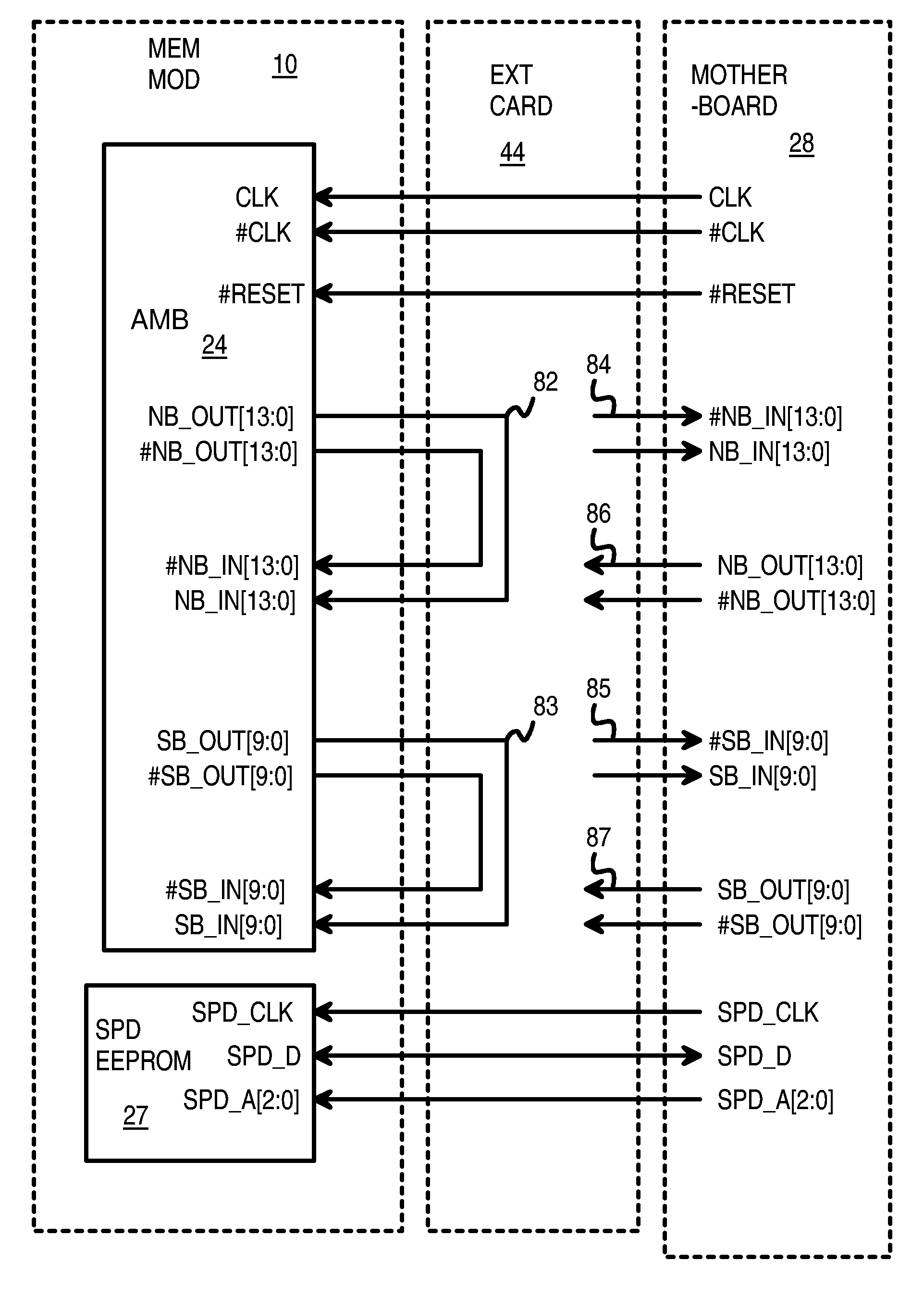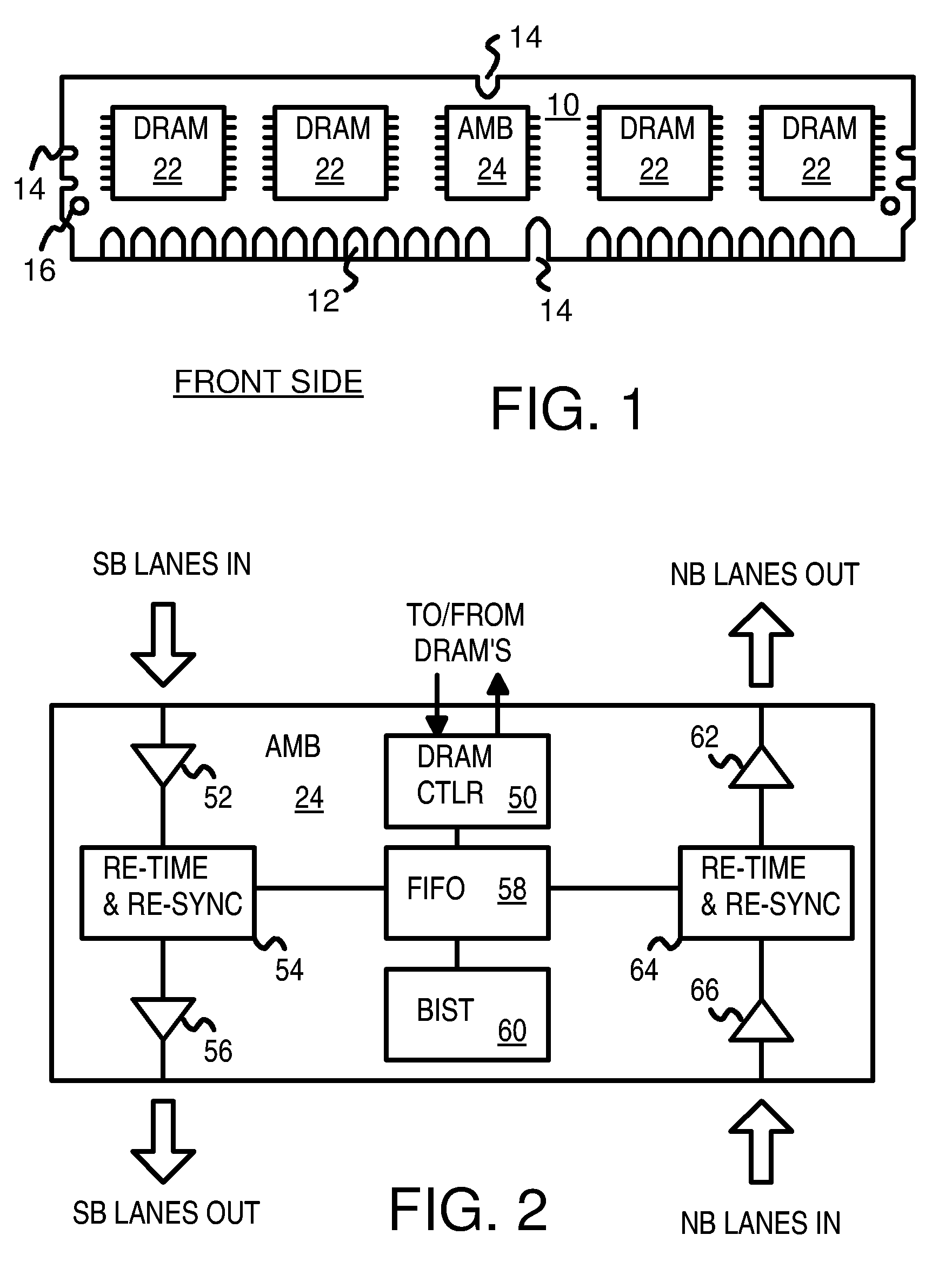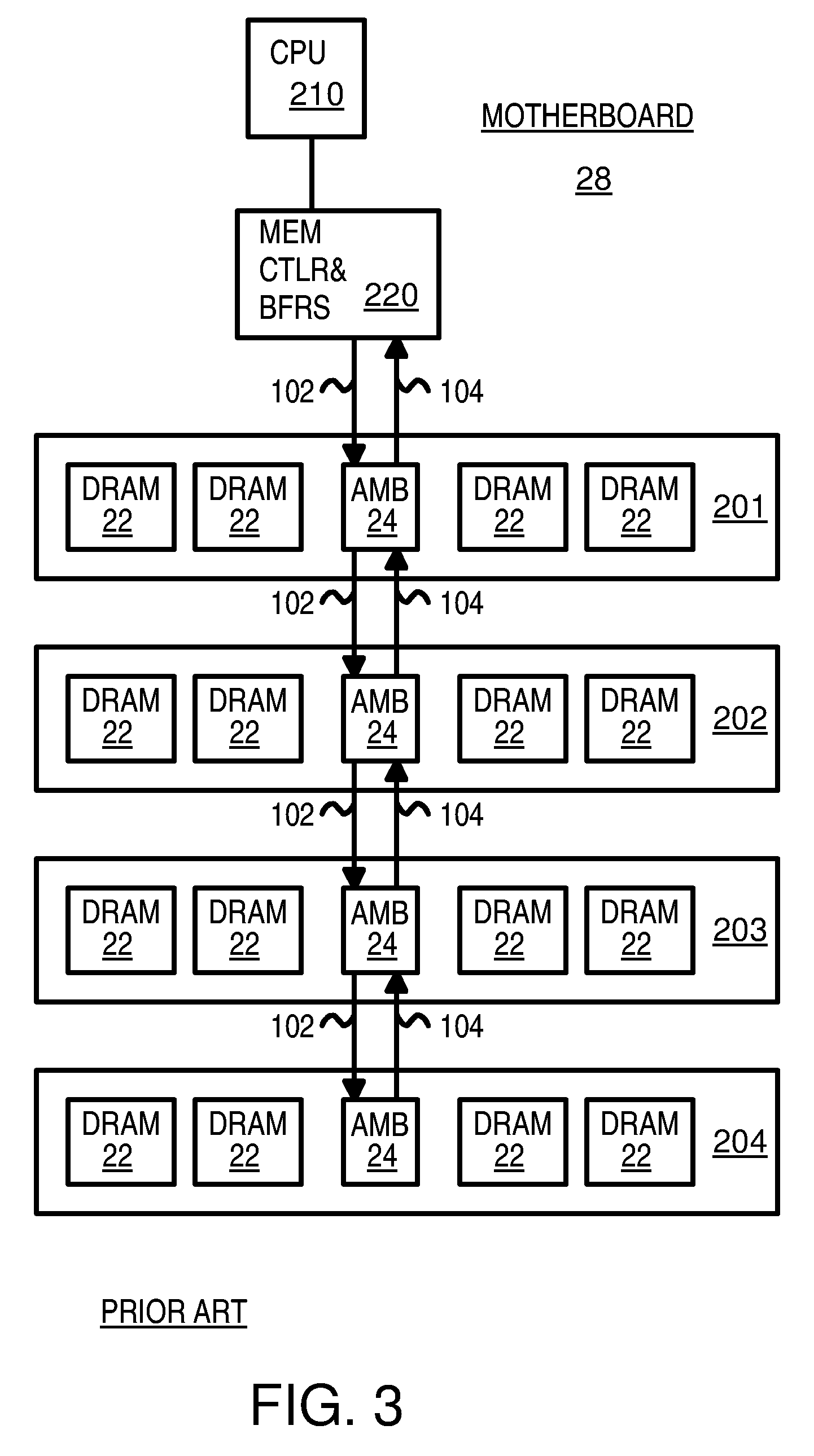Loop-Back Memory-Module Extender Card for Self-Testing Fully-Buffered Memory Modules
a memory module and extender card technology, applied in the field of memory modules, can solve the problems of increasing the cost of the motherboard, increasing the difficulty of pcb trace routing, and failure to signal when the text vectors do not match,
- Summary
- Abstract
- Description
- Claims
- Application Information
AI Technical Summary
Benefits of technology
Problems solved by technology
Method used
Image
Examples
Embodiment Construction
[0038]The present invention relates to an improvement in testing of memory modules. The following description is presented to enable one of ordinary skill in the art to make and use the invention as provided in the context of a particular application and its requirements. Various modifications to the preferred embodiment will be apparent to those with skill in the art, and the general principles defined herein may be applied to other embodiments. Therefore, the present invention is not intended to be limited to the particular embodiments shown and described, but is to be accorded the widest scope consistent with the principles and novel features herein disclosed.
[0039]The inventors have discovered that extender cards may be used to support loop-back testing of fully-buffered memory modules. The motherboard does not have to directly support loop-back testing. Muxes and switches for loop-back testing of memory modules do not have to be placed on the motherboard, allowing motherboard t...
PUM
 Login to View More
Login to View More Abstract
Description
Claims
Application Information
 Login to View More
Login to View More - R&D
- Intellectual Property
- Life Sciences
- Materials
- Tech Scout
- Unparalleled Data Quality
- Higher Quality Content
- 60% Fewer Hallucinations
Browse by: Latest US Patents, China's latest patents, Technical Efficacy Thesaurus, Application Domain, Technology Topic, Popular Technical Reports.
© 2025 PatSnap. All rights reserved.Legal|Privacy policy|Modern Slavery Act Transparency Statement|Sitemap|About US| Contact US: help@patsnap.com



